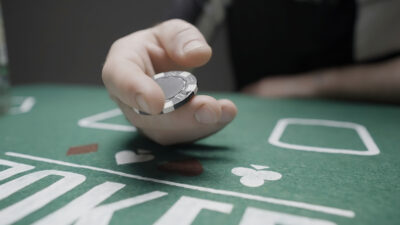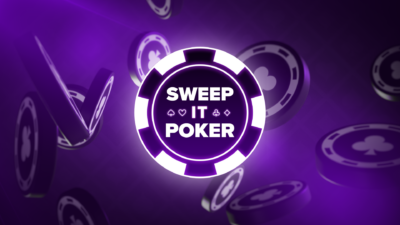Alright, you’re all shuffled up and the cards have been dealt. You’re a master of reading other people, so you know you’ve got this. Suddenly, you realize that your powers of observational deduction don’t work quite right in online poker… whatever shall you do!?
I’ll tell you what you’re going to do. You’re going to math harder than you’ve ever mathed before!
Odds and Playing the Math in Hold ‘Em
So we all know the poker player who plays with their feelings – “I’ve got a good feeling about that turn,” or “I can feel that he doesn’t have it.” That’s fun for tossing plastic chips around in your cousin’s basement over some beers, but I wouldn’t exactly call that a solid strategy when there’s real stakes.
Like most games, poker is based around complex systems of relatively simple math. What distinguishes poker from other games is the incomplete information factor. This is the main mechanic of the game. You know what you have, but everything else is a variable.
Think you can “feel” what other people’s cards are? Let’s review some facts from our last edition to dispel that illusion:
- There are 1326 different possible combinations of hole cards you can be dealt in Hold ‘Em
- There are 2,598,960 possible combinations the five cards on the table can be in as they are revealed
- There are 9,122,409,676,719,740,029,270,368,190,464,000,000 (9.122 undecillion!) possible combinations for how the entire 23-card board could play out for a game with 9 players.
Still think you can play with your feelings? You’re playing the math whether you like it or not… embrace it!
Poker doesn’t have to be undecillion-level complicated though. With just a little learning and practice, you’ll be automatically weighing the chances of any hand you have with a surprising level of human-quality accuracy. The key is to always remember that there are waaaaay more ways that your hand can go wrong than it can go right.
Base Hand Odds
So you’re at a table with five other players in the hand. Your decision to fold, call or raise to see a flop. You’ve got A/K of hearts. Pretty confident about that? Let’s see where you’re at from an odds standpoint preflop:
Your A/K suited has the following chances of making a hand by the end of the river, not accounting for any other players:
- High Card : 17.8%
- One Pair : 44.1%
- Two Pair : 22.3%
- Three of a Kind : 4.2%
- Straight : 2.9%
- Flush : 6.2%
- Full House : 2.3%
- Four of a Kind : 0.1%
- Straight Flush : 0.0%
With this hand matched against five totally unknown opponents, your hand has a 31% chance to come out on top. That is better than the 16.66% that would be an even distribution for you and 5 opponents..
A few things to note… That straight flush is at 0 from rounding. Keep in mind that a royal flush is just the highest straight flush. Yes, you have a gutshot royal flush draw – only if the 10 of hearts, the jack of hearts and the queen of hearts all hit the table. That’s a less than 1/1000 chance. The suited feels like it helps your odds a lot, but in the end having those matched suits is less than a 7% bump to your odds to make a decent hand.
In the above hand, you’ll be getting one pair or less in the likeliest circumstance. Think hard about how much that’s worth paying to see a flop.
Let’s look at the above hand again, this time in heads up play. There’s only you and one other player in the game and it’s your call whether to pay to see the flop.
Against a totally random hand in this circumstance, your A/K of hearts has a 66.1% chance to win. That is better than half, but it’s not quite the +11% over even odds that you had against 5 opponents.
You’re also not playing against a “random” hand. A player has filtered their cards to a degree. They’ve bet and called, so they are at least signaling they don’t have junk.
Pot Odds
Above, we were talking about straight odds to win. There is, however, another limited information mechanic in poker – the price. Throughout the game, you are put to a decision to add to the pot to stay in the hand repeatedly. This can be looked at as a price to stay in the game. Pot odds are what we call it when we weight this price versus hand equity or expected value.
Say you have a pair of 7s before the flop. There’s two other players in and there’s 800 chips in the pot. The decision is on you, and you can call for 200 chips to see the river. That means you’d be putting 20% of the value into the pot that you could prospectively win. There’s a table pair, and no possible draws on the board. There are two larger cards than your pair on the table.
Against two random hands, you have a 39.1% chance of taking down this pot after the river. You cannot, however, win if you don’t make it to the river or make everyone else fold.
You know from your cards and odds against a random hand that you are likely to have the best chances of anyone else, unless someone hit that low set on the flop. You’re paying 20% of the potential hand winnings to get into the river, and you’re roughly sitting at a player equity of 6:4, or 40%.
This means that you’re paying less than the perceived value of your hand to see the river. With your mathematical likelihood to win, you could conceivably call bets worth around 500 chips and still be on the right side of the numbers. Keep in mind, the pot gets bigger as you add more, thus diluting the pot odds argument and “pricing you in”, so to speak.
This is a good time to mention that “pricing you in” is an illusion. Remember the pot odds. Let’s say you’ve already paid 1000 chips to stay in a hand and there’s 5000 chips in the pot. The river has come, and you know that you have less than a 5% chance to win against random hands. Someone makes a small value bet of 400 chips (to puff up their pot probably!). If you have a 5% chance to win, paying 400 chips to see it through is a bad choice with only 5000 chips in the pot. You’d need ~8% chance to win to square those pot odds.
Already putting money into the pot does not mean you are priced in. Beware sunk cost… it’s the biggest weapon that the person with the winning hand has at their disposal to make you keep pushing over your chips!
Implied Odds
Let’s take this a step further. We know that pot odds are when you take the size of the pot into account versus the price of continuing in the game. Let’s move into something more abstract – implied odds.
Implied odds don’t only look at the pot and your chances versus a random hand. They are looking at the potential throughout the rest of the hand. Let’s look at another example.
You’ve got 10/J suited versus 5 opponents before the flop. You’re at about 24% chance to win… better than even 20% (1 of 5) odds! But wait! Someone’s going hard pre-flop… made hand? They throw down 900 chips into 100 chips of blinds. 3 callers, your decision. You’re now being asked to pay 900 into a 3700 chip pot to see the flop. This is less relative price than your chance to win to see three more cards, so you jump in and call. But… the player on the button raises to triple! Only one caller. It now comes back to you at with another 1800 into a 9100 chip pot. You’ve got the odds on your side in isolation… but this is starting to feel like sunk cost.
…or is it?
Let’s freeze in that moment. Someone made a ridiculously high bet off of just blinds… usually meaning that they have (or are representing they have) a medium pocket pair. They know they likely have the best hand preflop, but after more cards come out they probably won’t. That first player was probably trying to just buy the blinds, plus maybe some sucker that jumped in with trash.
The second player, however, made a value bet. While their raise was high compared to previous bets, they knew that at least one or two players would feel obligated to call after already putting so much money in. This player is intentionally growing the pot bigger instead of trying to elicit folding. This usually means they think they have the winning hand, or it is very likely that they will be the time the river is flipped.
They are trying to price other players in with pot odds… make it so they simply can’t fold over such a small amount of chips relative to the size of the pot. If you call, you’ve paid 2700 chips to access around a ~10k chip pot. While it’s likely that this is worth it to see a flop with your upside chance of almost quadrupling your chips in the middle of the table, tread lightly. If your opponent understands pot odds, they may be keeping you on the hook and just building up their pot without scaring you away.
It’s important to keep in mind here that there are three cards on the flop. With a hand like 10/J suited, you’re likely to know whether you have a real hand or not after the flop. With the turn and river only being one card, be very cautious about following value bets to those cards. If you haven’t gotten a hand worth playing in the first five cards, it’s unlikely you’re going to make one with those last two. A good player who knows they have you beat will just bleed you the rest of the hand to grow their pot.
Simple Gameplay. Complex Nuance
Poker overall is a very simple game in concept, but the combination of playing card randomness and incomplete information makes it so a lifetime of playing poker would still not be enough for anyone to totally understand the nuance and intricacies of the game.
In this article we’ve only scratched the surface of quick odds calculation in poker. Even knowing these few things though, you can estimate what’s worth it to you much better than just playing blind. Poker is about incomplete information… the more information you know about the game and theory, the less disadvantage you take from not knowing what’s in other players’ heads.
That’s all for us in this week’s Thinking Poker. We’ll be back in a few weeks to talk more about the fundamentals of all things poker!
Practice makes perfect… hit the tables today!
Play Now




